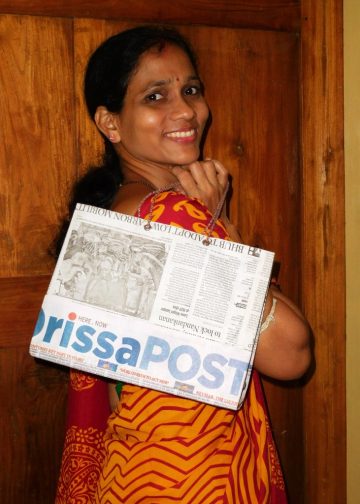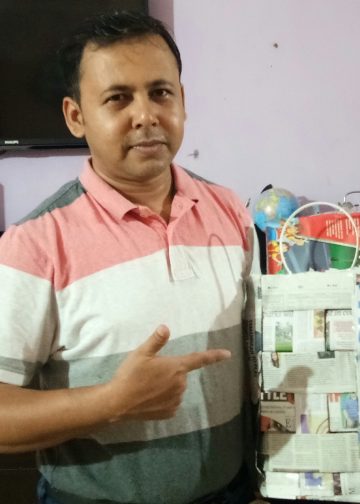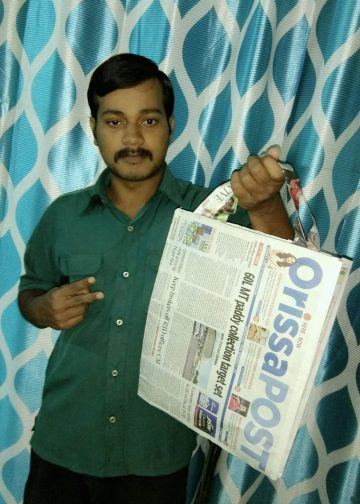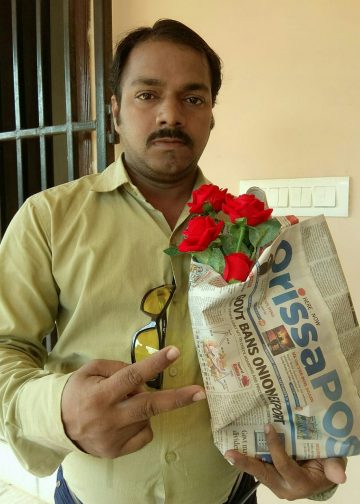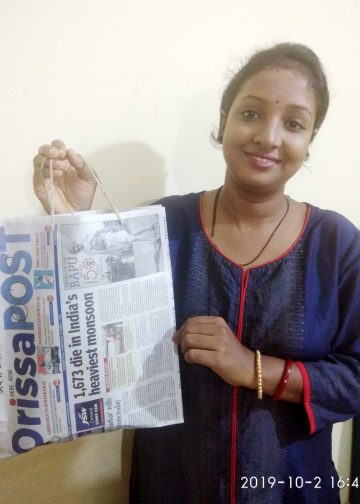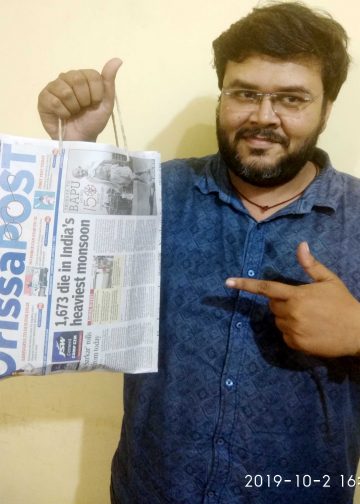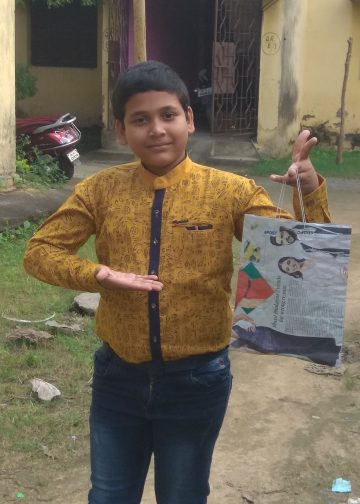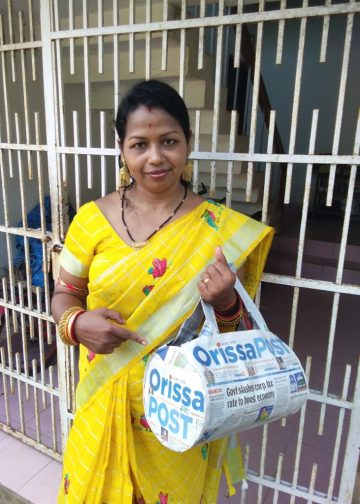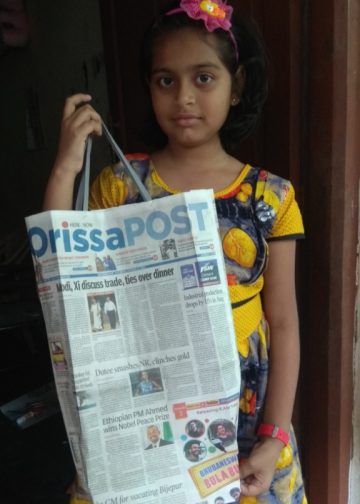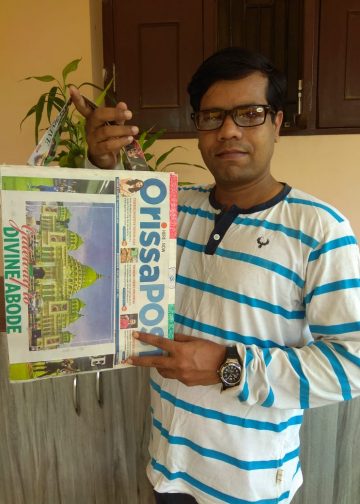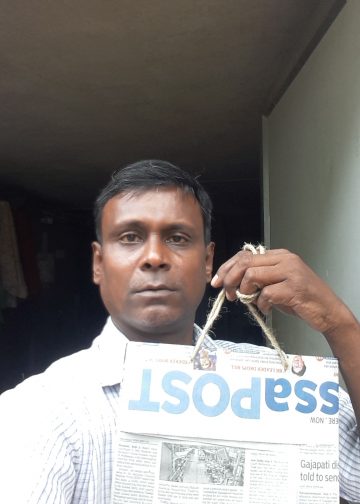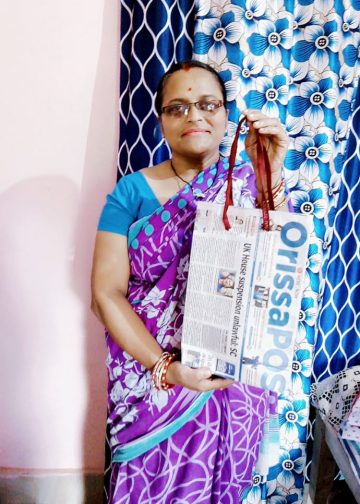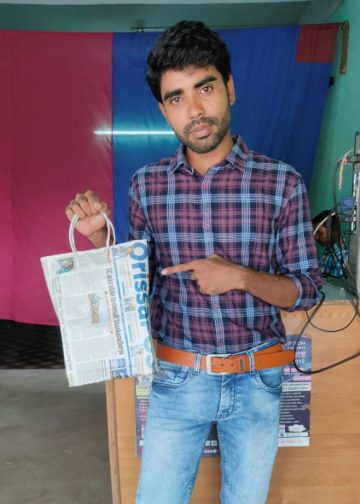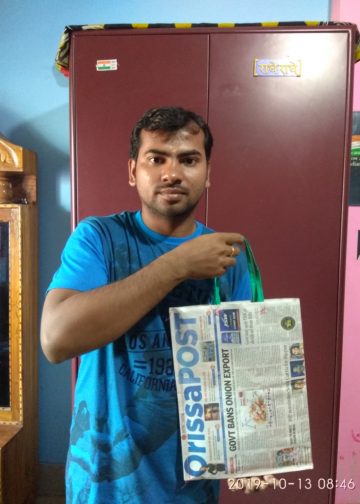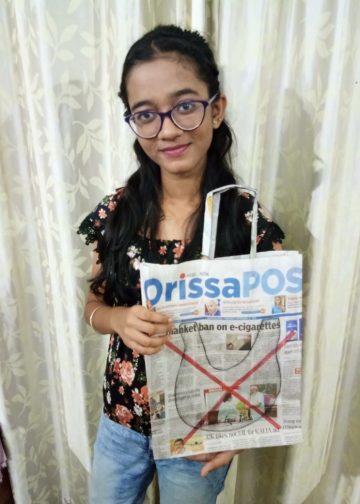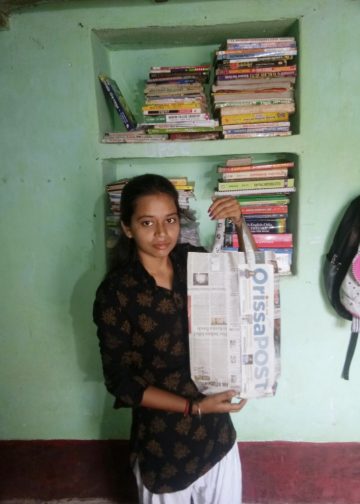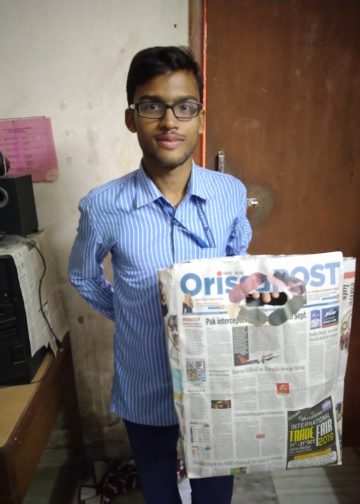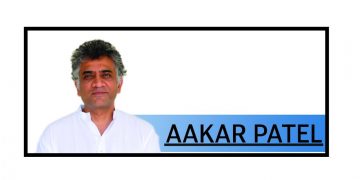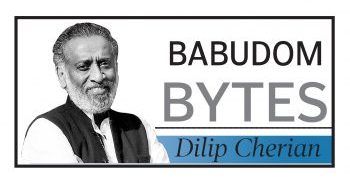SUNDAY POST FEB 15-21
COVER STORY
Mahima Dharma, by repudiating Brahminical idolatry and the humiliating aspects of social discrimination, reaffirmed and strengthened the democratic foundations of Hinduism. The religion of the Vedanta is a faith that shines through the ages thanks to its abiding intellectual supremacy reflected in the capacity to assimilate dissent, and even heresy. Hinduism could assimilate so many diverse faiths throughout the course of history due to its liberal ideological temper. Movements and undercurrents of dissent within Hinduism served to purify the faith and initiate an overall moral and
theological overhaul. Movements like that of Bhima Bhoi’s deserve close historical scrutiny. Himanshu Guru focuses on the basic moral tenets of the faith and its continuing relevance
 In the 19th century when society was splintered on class and religious lines, there erupted, in many parts of the country, movements that challenged the prevailing orthodoxy and propagated equality – the essence of religion. Mahima Dharma gained ground in the western part of erstwhile Orissa as a reaction against the Brahminical order. It preached universal equality and brotherhood. Founded by Mahima Goswami in the then Boudh-Sonepur region, the religion was formally established by the efforts of Bhima Bhoi who propagated its basic teaching through ‘bhajana’, ‘janana’ and other literary means along with his spiritual consort Annapurna Devi and disciples. His famous couplet “Let my soul be condemned to hell, but let the universe be redeemed” finds a place in the Parliament Hall of the country. At a time when ethnic, religious, class and caste divisions are acute in the country that are fomenting tension and endangering political stability, the essential teachings of Mahima Dharma are relevant because the search for an inclusive social order is still very much on. Written in simple language, his songs that celebrate the spirit of fraternity and love for all mankind still captivate millions of listeners. Bhima Bhoi discarded caste and class disparities and believed that social and religious harmony could be established only through peace and non-violence. While Joranda is the nerve-centre of Mahima Dharma Bhima Bhoi belonged to Khaliapali in Subarnapur district where his ‘samadhipitha’ now stands. A grand festival is organised every year at Khaliapali on a full moon day in the month of Magha.
In the 19th century when society was splintered on class and religious lines, there erupted, in many parts of the country, movements that challenged the prevailing orthodoxy and propagated equality – the essence of religion. Mahima Dharma gained ground in the western part of erstwhile Orissa as a reaction against the Brahminical order. It preached universal equality and brotherhood. Founded by Mahima Goswami in the then Boudh-Sonepur region, the religion was formally established by the efforts of Bhima Bhoi who propagated its basic teaching through ‘bhajana’, ‘janana’ and other literary means along with his spiritual consort Annapurna Devi and disciples. His famous couplet “Let my soul be condemned to hell, but let the universe be redeemed” finds a place in the Parliament Hall of the country. At a time when ethnic, religious, class and caste divisions are acute in the country that are fomenting tension and endangering political stability, the essential teachings of Mahima Dharma are relevant because the search for an inclusive social order is still very much on. Written in simple language, his songs that celebrate the spirit of fraternity and love for all mankind still captivate millions of listeners. Bhima Bhoi discarded caste and class disparities and believed that social and religious harmony could be established only through peace and non-violence. While Joranda is the nerve-centre of Mahima Dharma Bhima Bhoi belonged to Khaliapali in Subarnapur district where his ‘samadhipitha’ now stands. A grand festival is organised every year at Khaliapali on a full moon day in the month of Magha.
Tenets
 Mukunda Das alias Mahima Goswami came from a Brahmin family based in Boudh. He was in charge of the Balasingha Matha in Boudh and attained salvation at Kapilas in 1862. He is credited with founding Mahima Dharma, the principal tenets of which are followed by the faithful. A believer a) doesn’t wear a sacred thread or apply tilak on his forehead, b) doesn’t wear a garland of beaded basil, c) doesn’t take food before sunset, d) doesn’t eat salty, very sweet or bitter food, e) performs ‘sarana’ and ‘darsana’, f) begs for food from one family only once in his lifetime, g) stays in one village for only one day and no more, and h) practices truth and non-violence in the spiritual effort to attain immortality.
Mukunda Das alias Mahima Goswami came from a Brahmin family based in Boudh. He was in charge of the Balasingha Matha in Boudh and attained salvation at Kapilas in 1862. He is credited with founding Mahima Dharma, the principal tenets of which are followed by the faithful. A believer a) doesn’t wear a sacred thread or apply tilak on his forehead, b) doesn’t wear a garland of beaded basil, c) doesn’t take food before sunset, d) doesn’t eat salty, very sweet or bitter food, e) performs ‘sarana’ and ‘darsana’, f) begs for food from one family only once in his lifetime, g) stays in one village for only one day and no more, and h) practices truth and non-violence in the spiritual effort to attain immortality.
Bhima Bhoi – The Poet
Bhima Bhoi was born at Jatasinga near Subalaya of Subarnapur district which was at that time a part of Rairakhol estate. Soon after, the infant was abandoned by his mother on the bank of a pond on the outskirts of the village. He was initiated by his guru Mahima Goswami whose teachings we came to know of from the writings of Bhima Bhoi. The writings of the poet about Mahima Dharma are original, authentic and real. It is learnt from the writings of Bhima Bhoi that Mahima ‘Gosain’ himself blessed him and asked the poet to give expression to the basic teachings of Mahima Dharma in a literary fashion.

Bhima Bhoi’s Mahima Dharma
After the death of his guru Mahima ‘Gosain’ in 1876, Bhoi returned from Joranda to Khaliapali broken-hearted and tried to reorganise Mahima Dharma in a different way. He modified the tenets of the Mahima cult and himself became the ‘guru’ of a new form of religion. It is a phenomenon of great significance that Bhima Bhoi, belonging to the Kandha tribe, emerged as the progenitor of a religious system which disowns the caste system and spiritual idolatry.
Bhima Bhoi’s samadhi
Bhima Bhoi, at Khaliapali, did not live the life of a sanyasi. He made up his mind to organise a monastic institute fashioned after his mysticism. Annapurna, his spiritual consort, was a sanyasini who lived with him in the ashram and was in charge of initiating female devotees. Bhima Bhoi died in 1895 when he was just 45 years old. A ‘samadhi’ was built at Khaliapali after his death in his sacred memory.
Main Writings
• “Boundless is the anguish and misery of the living who can see it and have to tolerate. Let my soul be condemned to Hell. But let the Universe be redeemed.”
• Praanika Arata Duhkha Apramita Dekhu dekhu kebaa Sahu/Mo Jivana Pachhe Narke Padi thaau Jagata Udhhara heu.
The legendary poet’s literary works include Stuti Chintamani, Brahmanirupana Gita, Adianta Gita, Chautisa Granthamala, Nirveda Sadhana, Sruti Nisedha Gita, Manusabha Mandala, Mahima Vinoda in four volumes (unpublished), Brihat Bhajana Mala and Bangala Atha Bhajan. Stuti Chintamani is his most important work. It is a collection of 100 ‘bolis’ consisting of 2,000 stanzas. The work is a cluster of lyrics on his life, religion and philosophy. Bhima Bhoi’s literary output remains the earliest and most accessible source of Mohima theology and its codes of conduct. His poetic transformation of theology into emotional self-realisation and the outpourings of the soul are unique as literary products.


Maghamela
On a full moon day of Magha, Bhima Bhoi and Maa Annapurna are ceremonially worshipped on an altar decked with 108 pitchers. A large number of devotees from Orissa, Chhattisgarh, West Bengal, Assam and Andhra Pradesh assemble at Khaliapali during the festival known as Maghamela.
Bhima Bhoi, the saint-poet and prophet, emerged as a strong voice of pragmatism in 19th century society marked by widespread social injustice, religious bigotry and caste discrimination. He believed in one god, one society and one religion. He led the movement known as ‘jagata udhhara’, or the liberation of the world, from his ashram at Khaliapali.
The moral decadence of the 19th century left India in urgent need of religious and social reform. A religion of the masses, Mahima Dharma came both as ‘loka dharma’, and ‘yuga dharma’, a religion of the age. It rose against a divided society that was virulently castiest, savage and oppressive. Bigotry, immorality and corruption were rampant.
Despite the wide acceptance of his poetry and his faith, Bhima Bhoi’s early life remains a mystery.
Except the fact that Bhima was a Kandha by birth, little is known of his birth, his parents or his early years. It is now accepted that he was born in western Orissa around the mid 19th century into abject poverty. Orphaned in infancy, Bhima was a neglected child. The lonely and poor Bhima survived by tending the cattle of local farmers in the forests in early life.
With no formal education, but a remarkable memory and a melodious voice, he composed and sang songs even as a boy. Bhima Bhoi was a popular singer and composer in his neighbourhood long before he found the Mahima faith. He sat for hours outside the village Bhagabata-Tungi and memorised every syllable uttered by devotees.
Once Mahima ‘Gosain’ and Govinda baba came to his house at Kankanpada in Gramadiha at midnight and initiated him. The guru predicted that Bhima had a preordained role in propagating the Mahima faith, and blessed him with the power of poetic vision. Two Brahmin scholars, Basu and Hari Panda, along with the converts Markanda and Dharmananda Das of Anugul, were sent by Mahima Goswami to record his songs and hymns.
Bhima Bhoi’s popularity as a poet and preacher kept growing among the people, as he travelled from village to village.
His bhajans sent to Mahima Goswami were sung at different ‘tungis’ and congregations. Ordained by Mahima ‘Gosain’, a maiden called Annapurna from Madhigrama near Dhenkanal, surrendered to Bhima Bhoi as his spiritual consort. With her spiritual powers, she managed his ashram, and also propagated the faith. To the followers of Bhima Bhoi, she came to be known as Maa Annapurna.
Mahima Goswami passed away on Falguna sukla dasami in 1876 at Joronda. After him, the sanaysis parted ways over theological questions like the relative supremacy of the ‘balkala-dhari’ and ‘kaupina-dhari’ orders. Bhima Bhoi, the humanist poet, who believed in fraternity and the purity of faith, was deeply upset. With his followers, Bhima Bhoi crossed the river Ang in 1877 to reach Khaliapali, a small village in Suvarnapur district. Lochan Bagarti, the ‘Gauntia’ of Khaliapali, greeted him with devotion, and donated land to set up his ashram. A child born in the Bagarti family on the day Bhima Bhoi arrived was named after him. Bhima Bhoi made Khaliapali his home till his death. He prayed, preached, composed and sang for the spiritual liberation of the entire world, seeking a synthesis between a worldly and a spiritual life.
Meanwhile, Bhima Bhoi accepted two women called Sumedha and Rohini as his worldly companions, and was blessed with a son and a daughter born to each of them. Maa Annapurna, his spiritual consort, remained a source of great strength. Bhimo Bhoi used to recite four songs at a time to his four scribes – Basu and Hari Panda, along with Markanda and Dharmananda Das. Ready with their stylus and palm leaves they captured his prolific outpouring of devotional poetry, unprecedented in literary history. Perhaps the deification of Bhimo Bhoi and Maa Annapurna prompted the Dewan of Sonepur to create problems at Khaliapali and Bhima’s ardent followers, Basu and Hari Panda, were forced to leave. Bhima Bhoi boldly proclaimed, “I am not a vassal of any ruler nor am I a serf, an obedient servant of rich men, I obey the command of only one person and that person is the guru”.
He dreamt of a world ruled by laws of the Lord eternal, whose supreme truth gave the ultimate answer to all questions. He did not believe in idolatry, Brahminical rituals and priesthood. He venerated the void and saw the presence of divinity in all beings and objects. He raised a voice of powerful protest against the divisions between mankind. He welcomed women into the fold and upheld radical and progressive views like female education and secularism. He implored the Lord of the universe to save the world from perdition. His invocation culminates in expressions that have made Bhima Bhoi immortal not only in Oriya but in devotional literature.

Historian Sadananda Agrawal, advisor to the Bhima Bhoi Samadhipitha Trust says, “Bhima Bhoi shrugged off his mortal coils on the 14th day of the dark moonless fortnight of Falguna in the year 1895 at Khaliapali. He was barely 45 years old. His mortal remains were interred and his devotees, under the leadership of Basu and Hari Panda, erected a ‘samadhi’ temple. Samadhi temples were erected also in honour of his family and his leading followers who died in the first half of the 20th century. Maa Annapurna, however, was buried by the side of Bhima Bhoi in the main temple. The Paduka Mandir lies on the spot where Bhima Bhoi composed and sang to his scribes. The silver-coated wooden sandals of Bhima Bhoi and Maa Annapurna are objects of
worship.”
Bishnupada Sethi, IAS, founder chairman of the Bhima Bhoi Samadhipitha Trust, had a lot of contribution to make at Khaliapali
during his stint as collector of Subarnapur district. “The place where Bhoi and his consort Annapurna Devi were cremated is now a temple adjacent to which is the ‘upasana gruha’ where the silver-coated sandals of the couple are kept and worshipped daily. Every morning and evening ‘alati’ is done amid sounds of conch and bells. In the afternoon, ‘annabhoga’ is offered. After his initiation Bhima Bhoi from a ‘lokakobi’ had become an ‘adikabi’, ‘santhakabi’, and ‘jibanta debata’, and after 1877 Khaliapali became his ‘sadhanakshetra,’ he says.
Sanjib Chandra Hota, former state election commissioner, is a scholar of Mahima Dharma and an ardent follower of Bhima Bhoi. “Bhima Bhoi was a revolutionary poet. He was a great thinker and philosopher. Mahima Dharma is also known as ‘Alekha’ (unwritten) dharma. During his childhood once Bhima fell into a pit in a jungle while taking care of the cows at Redhakhol and was rescued by Mahima Goswami. Bhima was illiterate. All philosophical, devotional and revolutionary thoughts that he expressed in his lyrics are the products of self-education and enlightenment. Karl Marx wrote Das Capital I in 1867 when Bhima Bhoi was a young boy of 17. In Das Capital Marx says, “The expropriators shall be expropriated.” However, there is a difference in the approach of Marx and Bhima Bhoi towards revolution. Marx adopts the principle of dialectics which depicts perpetual struggle between thesis and anti-thesis
ultimately leading to a stage of synthesis which again becomes
thesis in the next stage of human history encountering another anti- thesis. Bhima Bhoi, on the contrary, expressed his absolute faith in the supreme. He could perceive the supreme in his guru Mahima Goswami. As a representative of mankind, he prayed to the almighty through his guru pleading to the supreme being to bring salvation to the world. In a revolution if there is ever any deficit in commitment then the movement becomes weak and loses its moorings. Bhima prayed that if there was the slightest deficiency in his devotion, let the entire suffering befall him but the world be
rescued,” says Hota.





